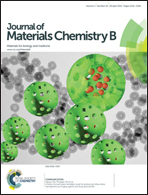Controlling conductivity of carbon film for L-929 cell biocompatibility using magnetron sputtering plasmas
Abstract
As a material of current interest compatible with many living organisms, carbon has received considerable attention for applications in medicine. To improve and investigate the performance and applications of diamond-like carbon (DLC) films for implantable bio-organs, it is important to optimize the synthesis process from the original deposition conditions to control the characterization of DLC. Simultaneously, it is necessary to develop new techniques and processes that yield DLC films with stronger adhesion to the substrate and better biocompatibility. This work investigates the suitability of sputtering plasmas for application of carbon film biocompatibility in cell growth. This work also reports an approach to the study of the biomedical response of the well-characterized carbon films deposited by a DC unbalanced magnetron sputtering system (UBMS). Conductive carbon films are prepared at a working pressure of 3 mTorr, and their properties are studied under different operating conditions by varying the target power density. In the present work, we have used L-929 cells as the biomaterial. The influence of L-929 cells on the carbon films fabricated using closed field UBMS is studied. The data reveal that the change in L-929 cell growth with 1–5 day's proliferation is caused by the decreasing electrical resistivity with increasing sp2 bonding structure.


 Please wait while we load your content...
Please wait while we load your content...